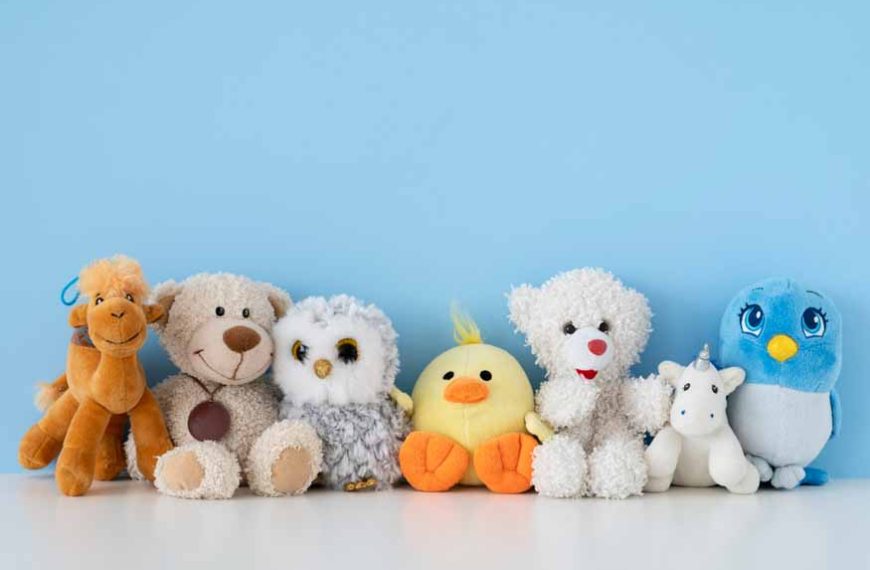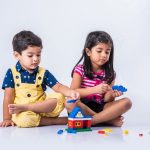Childhood is magical and full of imaginative possibilities. That’s when plush toys play a vital role in adding to the fantasy. However, it’s not just all fun and play! Plush toys for babies work in multiple subtle ways in helping the development of their emotional and overall development. Whether it is a pink-eared bunny or a rainbow-coloured zebra, plush toys can bring joy and comfort to a child in various scenarios. Secret talks or tea parties, your kid’s favourite plush toy accompanies all big and small moments. So let’s delve deeper into why kids get so attached to plush toys and how they are beneficial for your baby.
What Is a Plush Toy?
Soft plush toys for babies are those cuddly, squishy soft-fabric-lined toys that babies and kids love to cuddle and find comfort in. However, not all soft toys are plush toys. Plush toys are soft toys with a plush outer fabric material, with fur-like filling inside to give that soft, warm feeling. These plush toys come in a variety of sizes, characters, and colours, so you can pick one as per your baby’s age and preference.
With a plethora of options available, it could be tough to select the best plush toys for your child. You can take into account what your baby is currently attached to. Which character can act as your baby’s comfort toy? These plush toys, though seem like simple toys, play a significant role in your baby’s emotional development and growing confidence. Let’s read on further to understand how.
Benefits of the Best Plush Toys for Babies
- Emotional Bonding
- Physical Growth
- Learning Social Skills
- Language Development
- Comfort And Safety
- Stress Management
- Compassion And Empathy
- Healthy Attachment
- Educational Aid
Plush toys are often the first choice of toys for your little ones. Not only are these soft and comforting, but also safe and harmless, when it comes to toys. While babies begin to recognise shapes, colours, and their favourite characters, they start binding with their toy companion. While they may get confused with the developmental changes of their own body and mind, as they start figuring out more and more of the world around them, this plush toy provides them with that sense of permanent safety. Something they can go back to again and again, no matter how their day seems to have been.
This gradually helps develop your baby’s innate ability to self-soothe and regulate their emotions on their own. It builds their confidence in handling situations and unexpected events better when they can confide with their plush pal.
It is a common occurrence with babies to look for and chase after their favourite toys. When handling a plush toy, they tend to explore their own grip, clasp, individual fingers, ways to hold the toy, front, back, side, and many other spatial observations. They then can relate that to their own body as well, helping them figure out their fine motor skills even better.
Also, for babies just starting to crawl, keeping their favourite plushie at a little distance encourages the toddler to move and reach it faster. That way they push themselves to crawl, walk, or even run to their favourite toy eventually.
Plush toys are the baby’s first chance to interact beyond their parents. They almost became their first friends. Toddlers are often found involved in pretend play, talking to their plush buddies in different possible scenarios. They tend to feed them, take them out shopping, make them brush, or go to bed, just like they are taught to do by their parents.
They learn to interact with others through their plush toys. This helps them foster important social skills which come in handy while making friendships. Allowing young children to explore role-play with their friends is also profoundly important to social development. This could come in handy when siblings/cousins are playing together or even when the toddler is trying to bond with new kids at his school/daycare.
As your baby continually engages in pretend play and active interactions with the plush toys, they try to voice their commands or instructions for the plushie toy. Using active sounds and forming small phrases helps advance their speaking and language skills. They also tend to modulate their voice naturally, when interacting with their toys. All this done repeatedly, gradually converts those babbles into decipherable words and language. Taking turns to talk to your child through their push toy, helps them repeat your words and build on communication even better.
Babies and toddlers, even teens and adults, are seen to be deeply attached to a particular plush toy. This is because this toy has been their “go-to person” since the very beginning. This toy provides them with taht sense of safety and comfort. They also tend to carry it along with them when facing a new situation or territory, to give them that sense of familiarity and security.
Even when kids are unaware of their “big feelings” plush toys can help them calm down their difficult emotions. This provides them with an outlet to understand their feelings and reactions better. This ability to handle stressful situations, helps them traverse through their daily situations, even when their primary caretakers aren’t around.
Playing with a plush toy, a child learns to take care of and be more empathetic of others feelings. A baby imagines how the plushie would be feeling when it wants to eat, sleep, or play. This helps develop compassion and empathy in a child, along with making the kid more responsible towards others.
Babies and kids who have one or more plush toys are often found communicating with them in their alone time. This not only helps them vent out their emotions, excitement, and fears without any second thoughts but also gives the parents a chance to get a peek at their baby’s mind. You can know whether the baby is happy, sad, worried, or concerned about anything by listening to their innocent conversations with their plush toy. Sometimes, it could also reflect on how your child sees you when they imitate your habits and manners with their plushie buddy.
While this may not be that obvious, the best plush toys for babies can help assist a child in developing new practical and real-life skills. You can use their favourite plush toy to mimic and mirror their good behaviours, teaching them the best manners and etiquette. Whether it is brushing every day, or going to bed on time, a plush toy can help set that example for your child in a fun relaxed way!
How to Care for Plush Toys
While choosing a baby comfort toy, make sure you select age-appropriate plushies. For kids younger than 3 years, plush toys with tiny removable parts should be avoided. When babies explore plush toys, they tend to put them in their mouths as well. So it is important to keep them clean and hygienic. You can refer to the following steps to take better care of your plushies.
- Machine washes a plush toy on the gentle cycle, with cold water, and a mild detergent.
- Add a mesh bag protection for your plush toy.
- If a plushie is tattered or has loose parts, you should better opt for hand-washing the plush toy in a bucket or bathtub big enough for the toy. You should soak the toy for at least 15 minutes, scrub it gently, rinse, and drain the soapy water. You can then rewash the toy in clean water, and choose to machine-dry on a no- or low-heat setting, or air-dry with a fan or dehumidifier.
Plush toys can often get overlooked in the huge array of STEM and technologically advanced toys. However, as you must have realised by now, plush toys can be the very first friends for your babies. Be it a tiny giraffe or a big lion plush toy, kids get attached to their special companions that help them traverse their emotional and physical growth milestones with ease and joy! Get one for your child, and you will see what a positive difference it makes!
For more such interesting blogs, visit EuroKids















